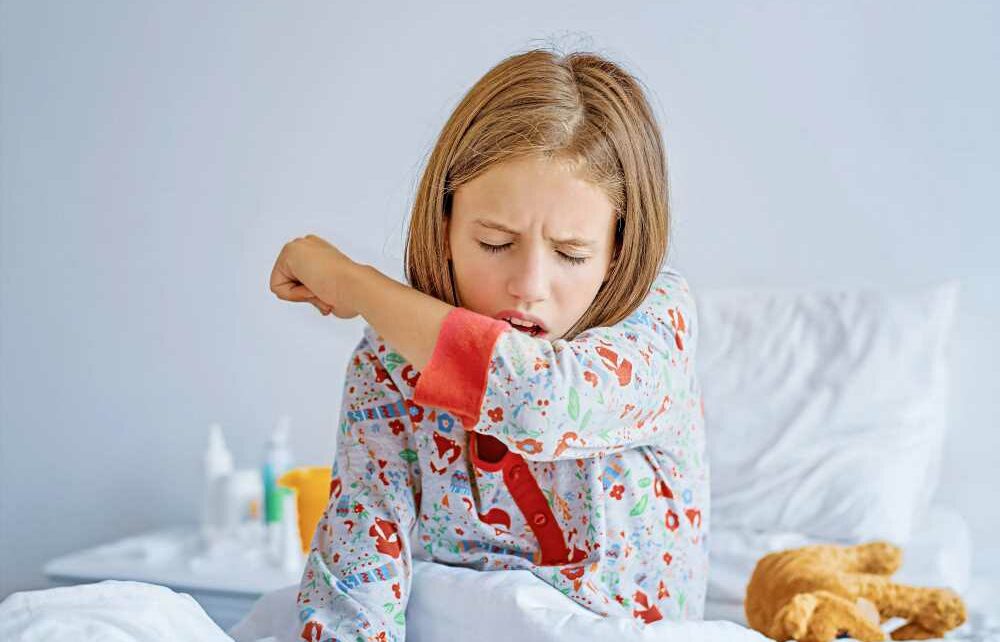KEEPING on top of damp and mould in the home can feel like an uphill battle, especially during the winter.
But living in spaces slowly being infested by the spores can cause a number of health problems in children, including asthma and allergic reactions, a GP has revealed.

It comes as new figures published by The Guardian showed that thousands of babies and toddlers in England are being hospitalised with lung problems most likely caused by damp and mouldy homes.
Dr Andy Knox, an associate medical director for the NHS, told the paper that this was "becoming a really major health issue for us as a nation".
Nearly 31,000 children aged four and under are admitted to hospitals in England yearly with conditions linked to the respiratory syncytial virus (RSV), The Guardian revealed.
This very common respiratory virus – which can cause cold-like symptoms as well as more serious lung and respiratory infections – can be exacerbated by living in dank and mildewed spaces, according to research.
Read more on mould
 HEALTH CHECK
HEALTH CHECK
The 4 ways mould can harm your health after boy, 2, dies in infested flat
 SCRUB UP
SCRUB UP
‘Harmless’ pink mould growing in your bathroom can trigger ‘deadly infections’
Dr Knox said 20 per cent of these hospital admissions appeared to be"directly linked to damp and mould-ridden homes".
What's more, NHS figures showed that of the 31,000 admitted, nearly 80 per cent of these – some 24,485 babies and toddlers – developed acute bronchiolitis needing hospital treatment.
Bronchiolitis is an inflammation of the small airways in the lung that tends to be caused by RSV, which can turn serious.
A 2021 study published in the British Medical Journal found that having brionchiolitis under the age of two could could up the risk of a child developing asthma.
Most read in Health
 HIGH HOPES
HIGH HOPES
‘Game-changing’ jab ‘turns off’ high blood pressure and could end daily pills
 TOTAL RECALL
TOTAL RECALL
Tesco issues urgent ‘do not eat’ warning for popular ready meal
 TRAGIC END
TRAGIC END
Critically ill Indi dies after life support switched off despite parent’s battle
 SUPER FRUIT
SUPER FRUIT
Eating popular fruit could help prevent dementia, study finds
An earlier study published by the journal in 2019, which looked at acute respiratory admissions for children under two in New Zealand, suggested that 19 per cent of these could have been prevented if homes were free of damp and mould.
Meanwhile, experts at the Royal College of Paediatrics and Child Health said children living in sodden homes are up to three times more likely to have breathing problems.
Dr Sarah Jarvis, GP and clinical consultant to Patient.info, told Sun Health that "damp and mould are a particular issue for children with asthma, which affects one in 11 youngsters in the UK".
Asthma is a common lung condition that can cause breathing difficulties, whose main symptoms are wheezing, breathlessness, a tight chest and coughing.
Certain triggers – such as allergies, smoke or infections like colds or flu – can cause what's known as an asthma attack, which the NHS says can be life threatening.
Mould can bring on asthma or make asthma symptoms worse, according to Dr Jarvis.
The GP explained that mould releases spores that your child can breathe in.
"If they are allergic to these, they can trigger wheezing, cough and shortness of breath," she said.
Dr Jarvis added: "Warm, damp housing which encourages the growth of mould also makes it easier for house dust mites to thrive. These are a common cause of worsening asthma in children."
Children with asthma are also more likely to have other allergic conditions which can cause itchy or watery eyes or nose, according to the GP, who said that "mould can trigger these too".
"Finally, mould may also increase the chance of your child getting coughs and colds, which could also bring on asthma symptoms in children with asthma," Dr Jarvis told Sun Health.
"Virus infections affecting the chest also include RSV, which can cause severe breathing problems in younger children even if they don’t have asthma."
What are the signs my child is ill from mould?
There are a few key signs to watch out for in your little one, which could indicate they're being sickened by damp or mould.
According to the NHS, mould spores can cause an allergic reaction, such as:
- Sneezing
- A runny nose
- Red eyes
- A skin rash
It can also cause an asthma attack.
Children having one will have difficulty breathing and speaking and may cough or wheeze, according to the British Red Cross.
They may be very anxious and distressed as they struggle to breathe. In some cases, their lips, earlobes and nail beds may turn greyish-blue because there isn’t enough oxygen in their body, the Red Cross added.
Finally, parents should also keep an eye out for symptoms caused by the RSV virus, which can be exacerbated by mouldy and damp homes.
It usually causes mild, cold-like symptoms, according to the US Centers for Disease Control and Prevention (CDC).
They include:
- A runny nose
- Decreased appetite
- Coughing
- Sneezing
- Fever
- Wheezing
In very young infants with RSV, the only symptoms may be irritability, decreased activity and breathing difficulties, the CDC went on.
Most infections will go away in a week or two, but RSV can cause bronchiolitis, which is an inflammation of the small airways in the lung, and pneumonia, an infection of the lungs.
The NHS recommends you take your little one to A&E immediately if you notice these four signs:
- They're having difficulty breathing – you may notice grunting noises or their tummy sucking under their ribs
- There are long pauses when they're breathing
- Their skin, tongue or lips are blue
- They're floppy and will not wake up or stay awake
Read More on The Sun
 LIP SERVICE
LIP SERVICE
Big Brother fans shocked as Henry and Jordan share surprise bedroom snogs
 CHOC LOT
CHOC LOT
Shoppers rush to buy 'delicious' Cadbury selection box that's the cheapest around
Who is most vulnerable to mould and damp?
While babies and children can be especially vulnerable to the effects of mould, older people can also be at risk.
Those with existing skin conditions can also be affected by living in mouldy spaces, as can people with asthma and allergies and those with weakened immune systems.
Source: Read Full Article



